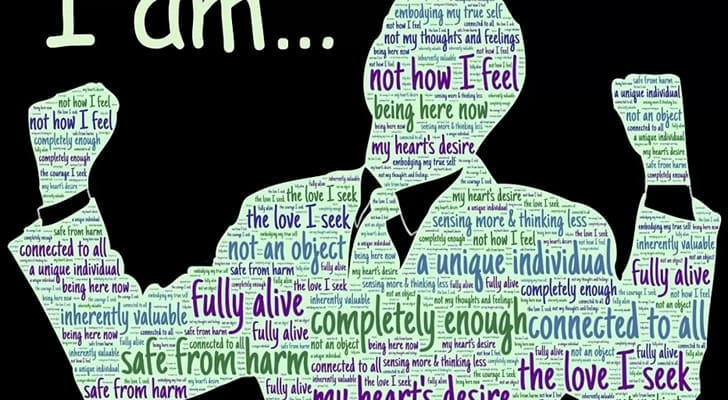Diversity and Inclusion: How to Maintain Your Sense of Identity in a Multicultural Workplace
With the development of globalization, the American workplace has shown unprecedented cultural diversity. From technology companies headquartered in Silicon Valley to the construction, transportation and manufacturing industries across the states, employees with different backgrounds, languages and values work together every day to form a complex and active multicultural landscape.
In such an environment, "sense of identity" has become an important issue that every workplace person must face. The so-called sense of identity refers to a person's cognition of "who he is" and the ability to maintain this cognition in different social fields. In a multicultural workplace, a sense of identity is related to personal professional happiness, as well as teamwork, organizational atmosphere and even performance.
Many immigrants, ethnic minorities or cross-cultural people working in the United States face a common problem: how to effectively adapt to mainstream workplace norms without losing their own cultural identity?

Basic characteristics of a multicultural workplace
The so-called "multicultural workplace" usually includes the following characteristics:
Diverse backgrounds of employees: covering language, religion, race, gender, generational differences, etc.;
Diverse communication styles: Different cultures have different understandings of direct expression, interaction between superiors and subordinates, and time concepts;
Parallel working methods: Some cultures prefer individualism and efficiency, while others emphasize collective decision-making and interpersonal harmony;
Different organizational identities: Employees have different understandings of "sense of belonging" and "loyalty", some people pay more attention to identity self-consistency, while others tend to adapt to organizational culture quickly.
These characteristics themselves are neither right nor wrong, but when there is a lack of proper management and understanding mechanisms, they may lead to misunderstandings, exclusion, and workplace marginalization. Maintaining a sense of identity in such an environment is the ability to "stand on oneself in differences."
Why is a sense of identity important?
In the workplace, identity is not just a psychological issue, it is also closely related to the following aspects:
Psychological safety: Research shows that when employees feel safe to express their opinions and backgrounds, they are more likely to speak up, participate in innovation and cooperation in the team.
Job satisfaction and loyalty: People who maintain their own identity are often more likely to establish a lasting sense of belonging in the organization, reduce emotional fatigue and willingness to leave.
Cultural conflict adjustment ability: People with a strong sense of identity are often able to more calmly identify the source of misunderstandings in cultural conflicts and propose neutral communication strategies.
The foundation of cross-cultural leadership: When a person can stably convey his values in a multicultural environment, he is often more likely to develop respect for and guidance of other people's cultures.
Therefore, identity is not "self-emphasis", but "cultural stability" based on understanding and cooperation, which is the key psychological capital for survival and development in the workplace.

How to maintain a sense of identity in a multicultural workplace?
The following are some common methods based on cross-cultural management research and workplace practice:
1. Distinguish between "adaptation" and "accommodation"
Adaptation is a behavioral adjustment based on understanding the rules, while accommodation is to suppress one's own characteristics in order to be accepted. The former emphasizes cognitive flexibility, while the latter is prone to psychological internal consumption. In the workplace, there is no need to hide your mother tongue, eating habits or festival traditions in order to "fit in". What is important is to learn to express confidently in appropriate occasions.
2. Build a personal "cultural narrative"
Everyone has their own cultural story, including family traditions, growth experiences, belief systems, etc. Internalizing these experiences into a "workplace version" that can be told not only helps to introduce yourself to others, but also helps to maintain a sense of direction at critical moments. For example: "The community where I grew up attaches great importance to mutual assistance and cooperation, which makes me particularly resilient when facing team challenges."
3. Participate in informal social networks
Informal interactions in the workplace (such as lunch exchanges, celebrations, and group projects) are important stages for identity recognition. Expressing personal culture in these occasions is often more natural and easier to be accepted. For example, bringing traditional snacks, sharing festival stories, or participating in cultural sharing activities organized by organizations are all effective ways of expression.
4. Actively learn other people's culture and form "cultural intertextuality"
A sense of identity does not exclude curiosity about other people's culture. On the contrary, through two-way learning, you can not only obtain more social resources, but also make the other party more willing to understand your culture. This "intertextuality" builds a common cultural foundation, not a cultural barrier.
5. Improve language and expression skills
Although it is important to maintain your mother tongue identity, language is always the core tool for communication in the mainstream workplace. Properly improving the expression ability of mainstream languages can help convey ideas more accurately, reduce misunderstandings, and also help to accurately express identity.
Case analysis: The story of a Mexican construction worker
Juan (pseudonym) is a member of a construction site in the Los Angeles area. His work team includes colleagues from multiple cultural backgrounds. In the first few years, he often suppressed his cultural expression-avoiding speaking Spanish, trying not to talk about Mexican festivals on the construction site, and not bringing traditional food. He was worried that these behaviors would be misunderstood as "unprofessional" or "difficult to integrate."
During a construction site safety training, he accidentally mentioned that his family would set up altars and prepare traditional cakes on the "Day of the Dead". This aroused the interest of several colleagues, and everyone began to ask questions. Later, he was invited to introduce the origin and significance of this festival at the construction site cultural day event. He found that when he naturally expressed his cultural background, the team atmosphere became more cordial.
This experience made him understand that true integration is not to give up oneself, but to promote mutual understanding through cultural expression. He later also participated in the Spanish communication support group to help new workers adapt to the work process faster.

Conclusion
In the American workplace composed of diverse cultures, a sense of identity is not a burden that hinders collaboration, but a bridge to build trust and convey unique values. Especially in industries such as construction that rely heavily on teamwork, maintaining and expressing one's own identity not only helps personal career development, but also enhances the cultural resilience and cohesion of the overall team.
The true meaning of diversity and inclusion is not just "allowing differences", but also "respecting expression and encouraging dialogue." In such a workplace environment, everyone does not have to be what others expect them to be, but should be a representative of the true self in the culture.
Maintaining a sense of identity is an inner strength - it will not hinder your progress, but will guide you to go further.
